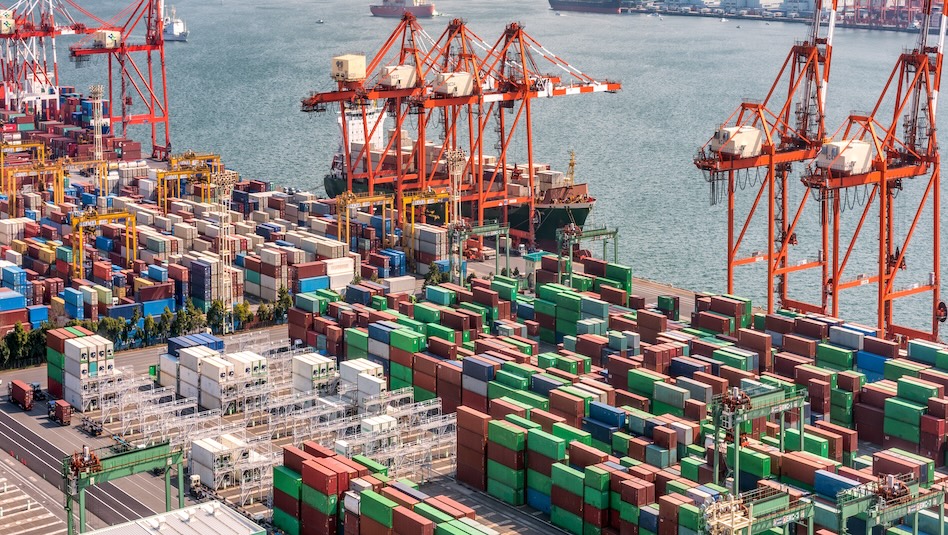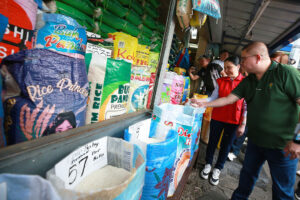




Philippines Trade Update: Trade trajectories trend along
 DOWNLOAD
DOWNLOAD

Policy Rate Updates: Double cut finale
 DOWNLOAD
DOWNLOAD

Monthly Economic Update: One for the road
 DOWNLOAD
DOWNLOAD


High rice prices may affect BSP’s easing cycle

Still-elevated rice prices could stoke inflation and threaten the Bangko Sentral ng Pilipinas’ (BSP) pace of monetary easing, GlobalSource Partners said.
“Such a precarious rice situation does not promise bright prospects for domestic inflation,” GlobalSource Partners Country Analyst Diwa C. Guinigundo said in a report.
“Given the inflationary impact of an expected weakening of the peso-dollar exchange rate, the uptrend in rice prices coupled with creeping fuel price increases and the reported price hikes of 63 goods in February could generate more price pressures.”
Headline inflation averaged 3.2% last year, the first time that full-year inflation fell within the central bank’s 2-4% target since 2021. It was also the slowest since 2.4% in 2020.
“The BSP would have to be careful in issuing forward guidance that commits itself to more rate reductions in the next meetings of the Monetary Board,” Mr. Guinigundo said.
“The supply side does not appear to be supportive of its 2-4% target,” he said, noting that inflation risk-adjusted forecasts for 2025 and 2026 stand at 3.4% and 3.7%, respectively.
For this year, the BSP expects inflation to average 3.3%. Accounting for risks, inflation could average 3.4%.
The Monetary Board delivered a total of 75 basis points of rate cuts last year, bringing the benchmark to 5.75%.
“Since the weight of rice at 8.9% dominates the weight of food in the consumer price index and food weighs heaviest among all the other components, economists and inflation forecasters fear of another surge in inflation this year and the next,” Mr. Guinigundo said.
The Agriculture department has announced plans to declare a food security emergency for rice. This would allow the release of buffer stocks of local rice from the National Food Authority to be sold at subsidized prices.
Mr. Guinigundo said this activity could be a “potential source of corruption.”
“Many buffer stocks could be declared aging and discounted only to be resold with minimal polishing. Given the forthcoming election, local government units could also use them to win votes,” he said adding that the impact of this move would be “minimal.”
Rice prices were supposed to start declining after the government slashed tariffs on rice imports, Mr. Guinigundo said.
“This did not happen because one, domestic rice production remained weak; and two, profiteering from reduced tariffs did not cease but only benefited importers, wholesalers and retailers who were reported to have engineered the artificial shortage of the food staple.”
President Ferdinand R. Marcos, Jr. issued an executive order that reduced tariffs on rice imports to 15% from 35% until 2028. This took effect in July.
“The problem remains because agricultural policy to stabilize prices of key commodities continues to focus on market dynamics rather than on production and agricultural productivity,” Mr. Guinigundo said.
Rescheduled meeting
Meanwhile, the Monetary Board’s first policy meeting this year was rescheduled to Feb. 13 from Feb. 20, the central bank said on Tuesday.
This as BSP Governor Eli M. Remolona, Jr. is set to attend the Financial Action Task Force (FATF) plenary and meetings in France from Feb. 17-20.
The Philippines has been on the FATF’s gray list since June 2021. Government officials are hopeful that the country can exit the gray list this year. — Luisa Maria Jacinta C. Jocson
This article originally appeared on bworldonline.com





 By BusinessWorld
By BusinessWorld